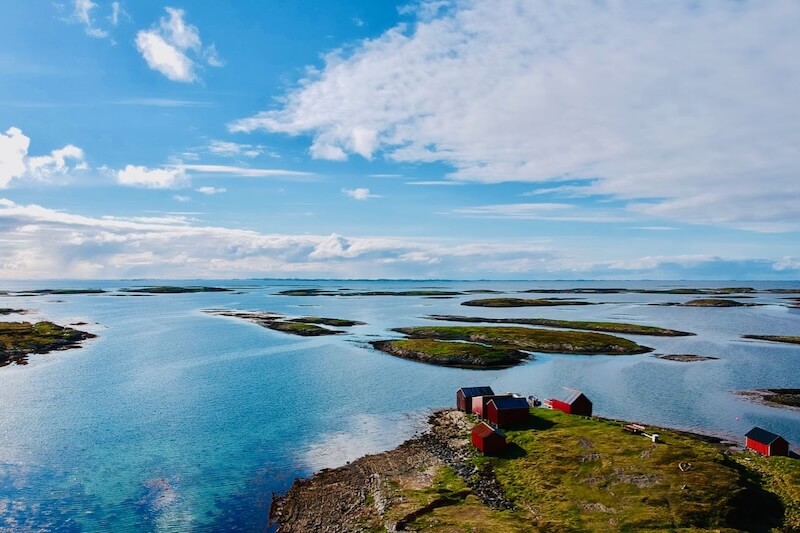
Pedalling to the Edge: Norway’s Hidden World Heritage Archipelago
There’s a point, somewhere off the Helgeland coast, where the mainland disappears behind you and the islands begin. Not the tourist-trodden kind with waffle huts

I’ve been bikepacking for around six years, and in that relatively short time, the evolution of the sport has been nothing short of remarkable. When I first started, the traditional four-bag setup—comprising a cylindrical handlebar bag, a small top tube bag, a frame bag, and a saddle bag—was the standard for any bikepacking adventure. At that time, innovations like carbon rear racks, oversized top tube bags, cycling hydration vests, unique straps, and small, versatile bags were virtually unheard of.

In just over half a decade, the sport has transformed dramatically. Cyclists are now traveling farther, packing lighter, and designing rig setups that would have been unimaginable in the 2010s. Among these innovations is the Hike-a-Bike harness, an ingenious device that transforms your bike into a rucksack with a few cleverly designed straps.
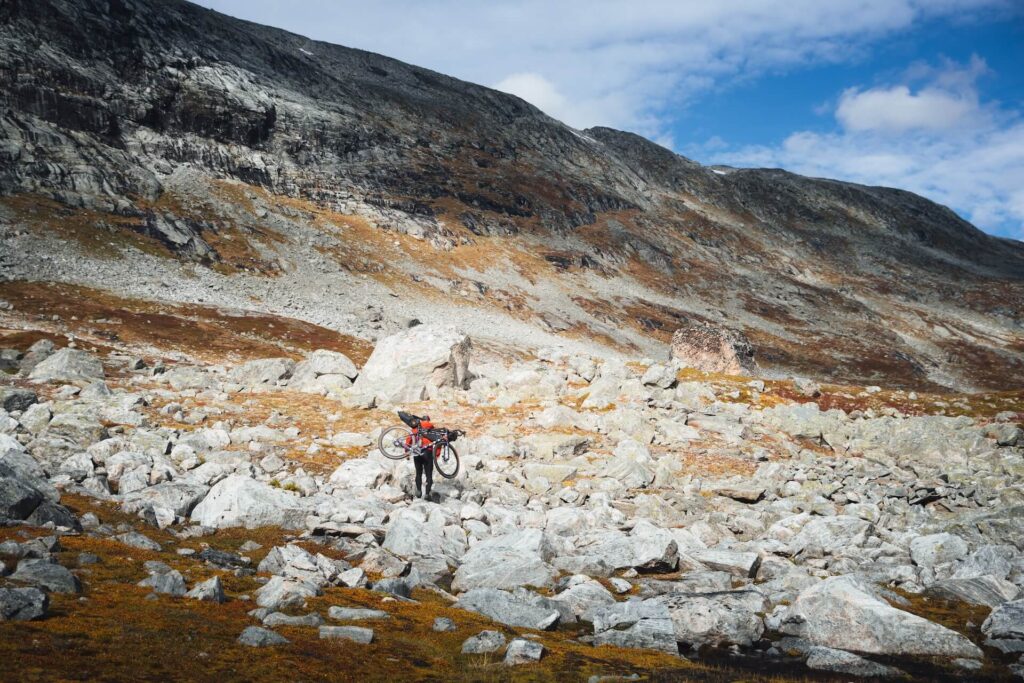
Incorporating a hiking segment into a bikepacking trip isn’t for everyone. Carrying a bike is physically demanding, a lesson I learned the hard way in 2022 when I hiked 10 kilometers across Breheimen National Park. After that gruelling experience, I swore off ever hiking my bike again. The biggest challenge with hike-a-bike is balancing the bike on your back, with your hands constantly supporting it—a task that quickly becomes uncomfortable as the pressure builds on your arms. When I discovered that the British-based company, Restrap, had developed a solution to this problem, I was intrigued. Could this be a game-changer?

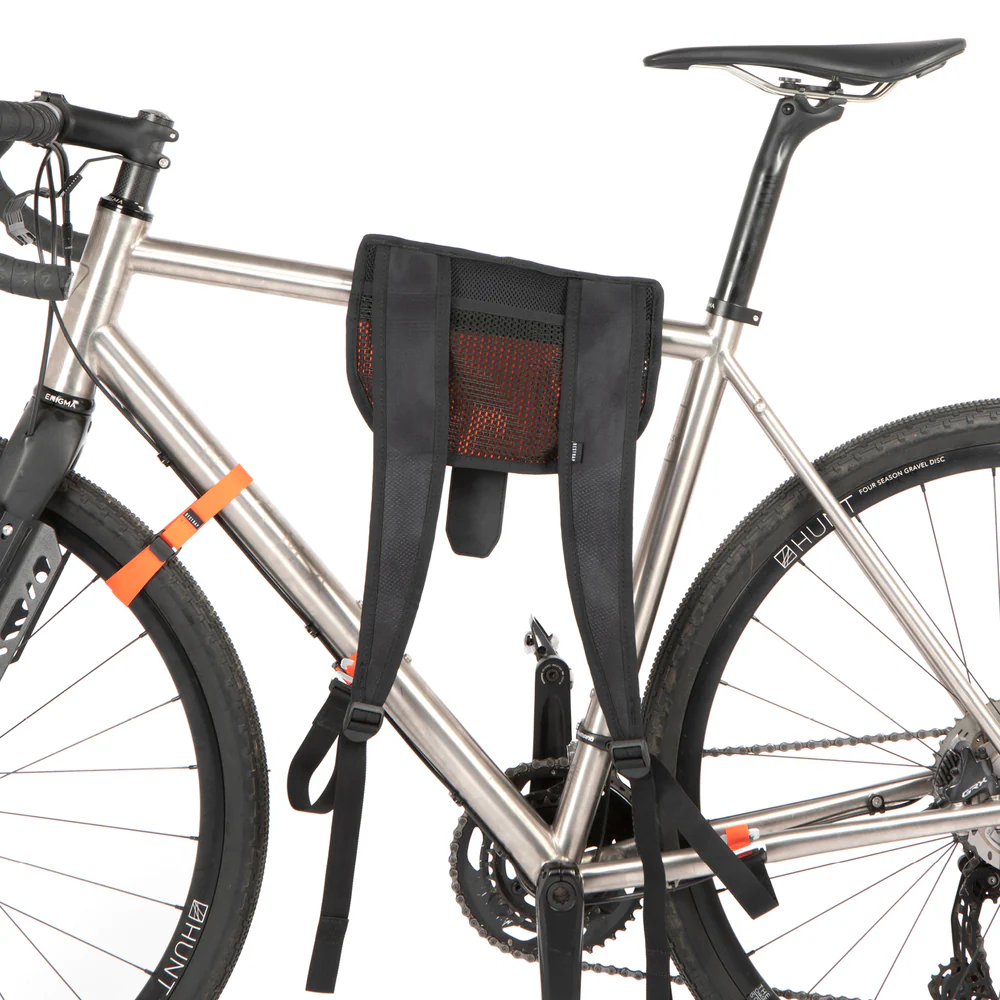

Perhaps it was time to give hike-a-bike another try. After all, Norway might be the ideal place for this evolving style of bikepacking. Imagine a country with over 500 hiking cabins scattered across its national parks and remote wilderness areas. Many of these cabins offer not only shared and private accommodations but also meals and even drying facilities. Even more unique, some of these cabins are accessible via gravel/paved roads that were purpose-built for the cabins. Norway’s landscape offers a unique blend of infrastructure and wilderness that is unparalleled.
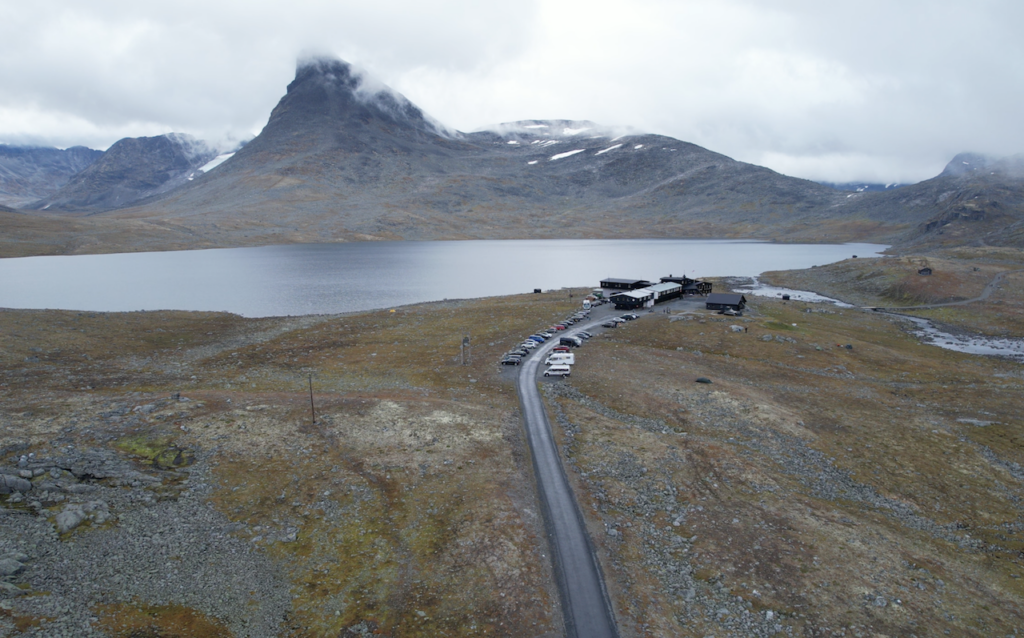
One of the most challenging yet rewarding places to hike in Norway is Jotunheimen National Park, also known as the “Home of the Giants,” where the country’s highest mountains are found. My good Norwegian friend Eirik has hiked all the highest peaks in the park and is well-acquainted with the cabins.
In August 2023, Eirik reached out to me with a proposal to cycle the only road that extends 7 kilometers into the park*, ending at a mountain cabin called Glitterheim. This cabin serves as a base for hikers aiming to summit Glittertind, Norway’s second-highest mountain.
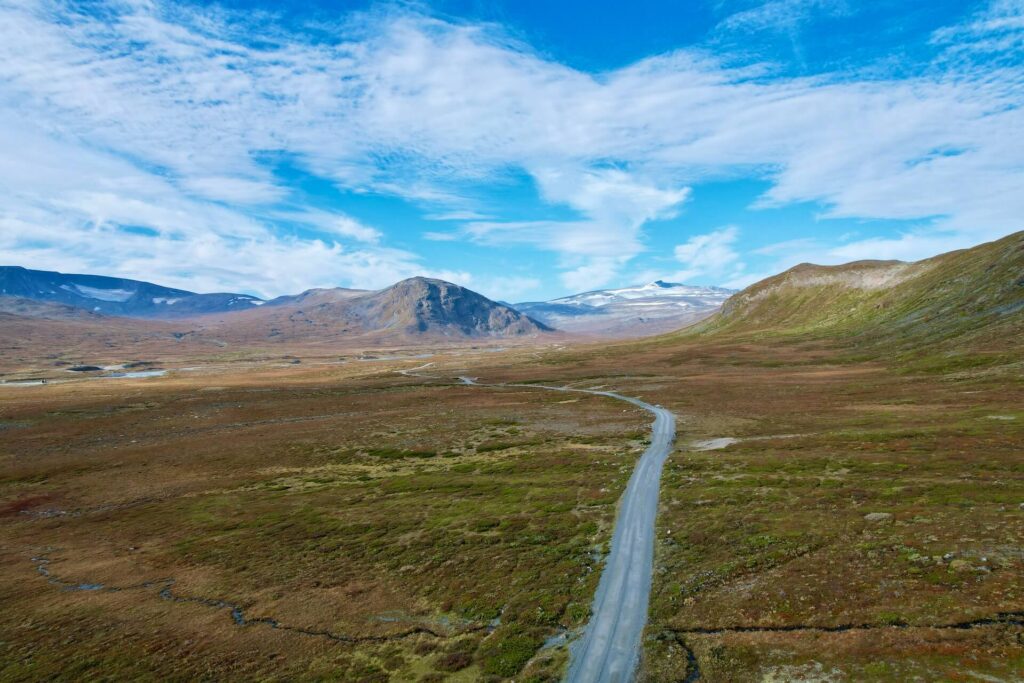
However, from Glitterheim cabin, there’s also a lower-altitude route that crosses an old glacier plateau. After a 16-kilometer hike, this route leads to another mountain cabin on the park’s boundary, where a road provides an exit. This seemed like the perfect new hike-a-bike challenge we had been searching for. I contacted Restrap, and they sent us two harnesses. Now, the big question remained: can we conquer this challenge, and will it be more enjoyable and less taxing than our first experience in Breheimen National Park? Watch the video to find out!
To celebrate the release of my new YT Video I’m teaming up with Restrap to offer you 10% off the whole Restrap range – Use Coupon Code: CYCLENORWAYAUG10 (Valid until 12th September 2024)
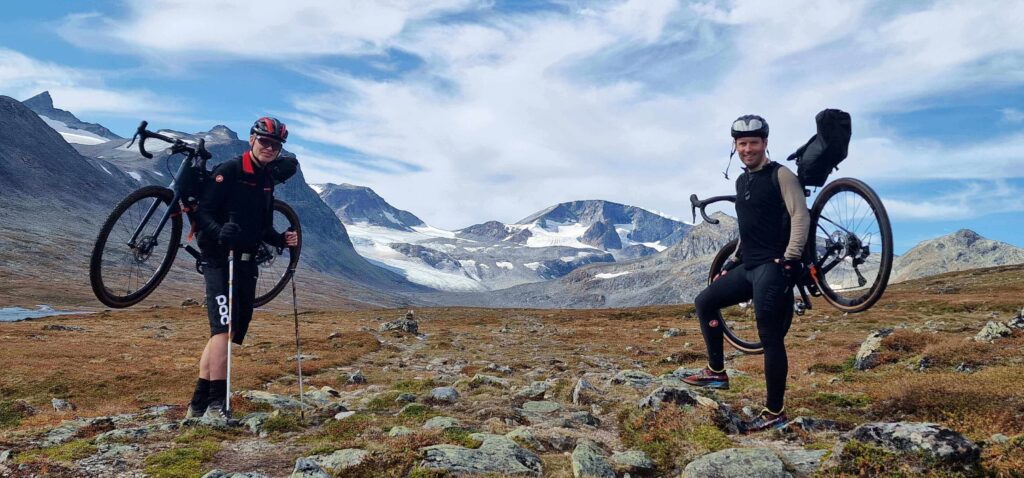
Matthew’s Hike-A-Bike Tips:
Check the weather: Only set out if conditions are favourable—wet, slippery surfaces can be dangerous with a bike on your back.
Wear the right boots: Opt for hiking boots with ankle support. Though heavier, they offer crucial stability on tough terrain.
Plan your supplies: Be meticulous with water and food. Research thoroughly where to resupply, and when in doubt, pack extra.
Test your limits: Before the real hike, do a short test with your loaded bike. Keep hikes under 3-4 hours if you’re not experienced, and shorter if climbing.
Pack light: Every gram counts. Avoid camping gear if possible—opt for roofed accommodations.
Mind your load: Be aware of obstacles like trees and rocks. You’re carrying a wide load, so navigate carefully.
Keep moving: Take short breaks, but stay in motion. Each time you put the bike down, it gets harder to lift again.
Glittertind ‘Hike-A-Bike’ Loop (Must be experienced and well trained to attempt this route).
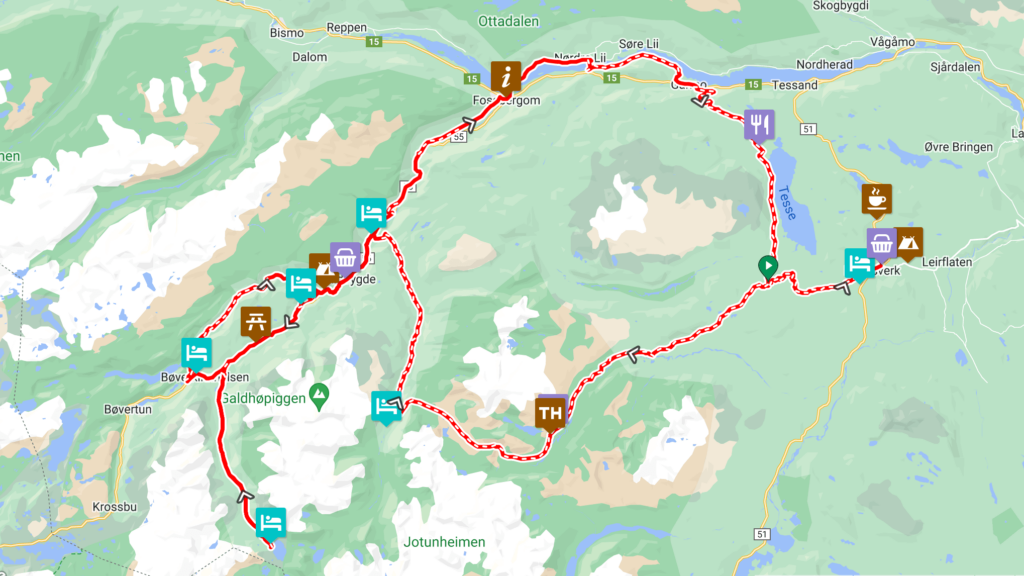

There’s a point, somewhere off the Helgeland coast, where the mainland disappears behind you and the islands begin. Not the tourist-trodden kind with waffle huts
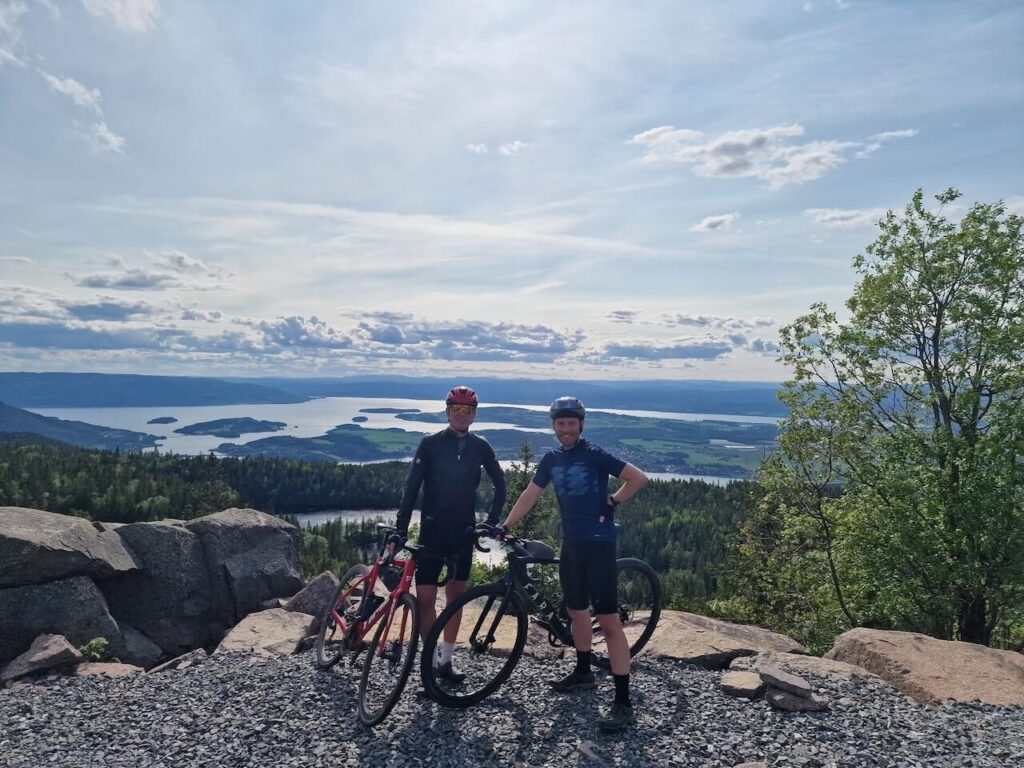
Climb Oslo’s Highest Road: The Hidden Beast of Gyrihaugen If you’re cycling through the Oslo region and think the terrain is all rolling forest paths
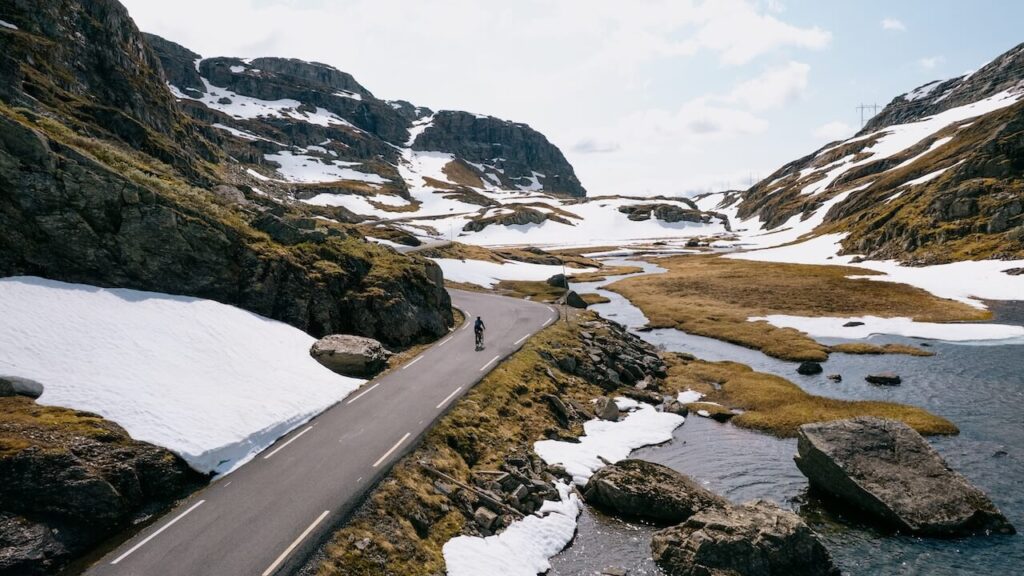
World Class Bike Photography in Norway – Part 2: This blog continues from [Part 1] We hit the road with a rough plan, a beat-up
Cycle Norway is dedicated to making Norway, safer and more enjoyable to experience by bike and to inspire and inform a growing audience of the opportunities available.